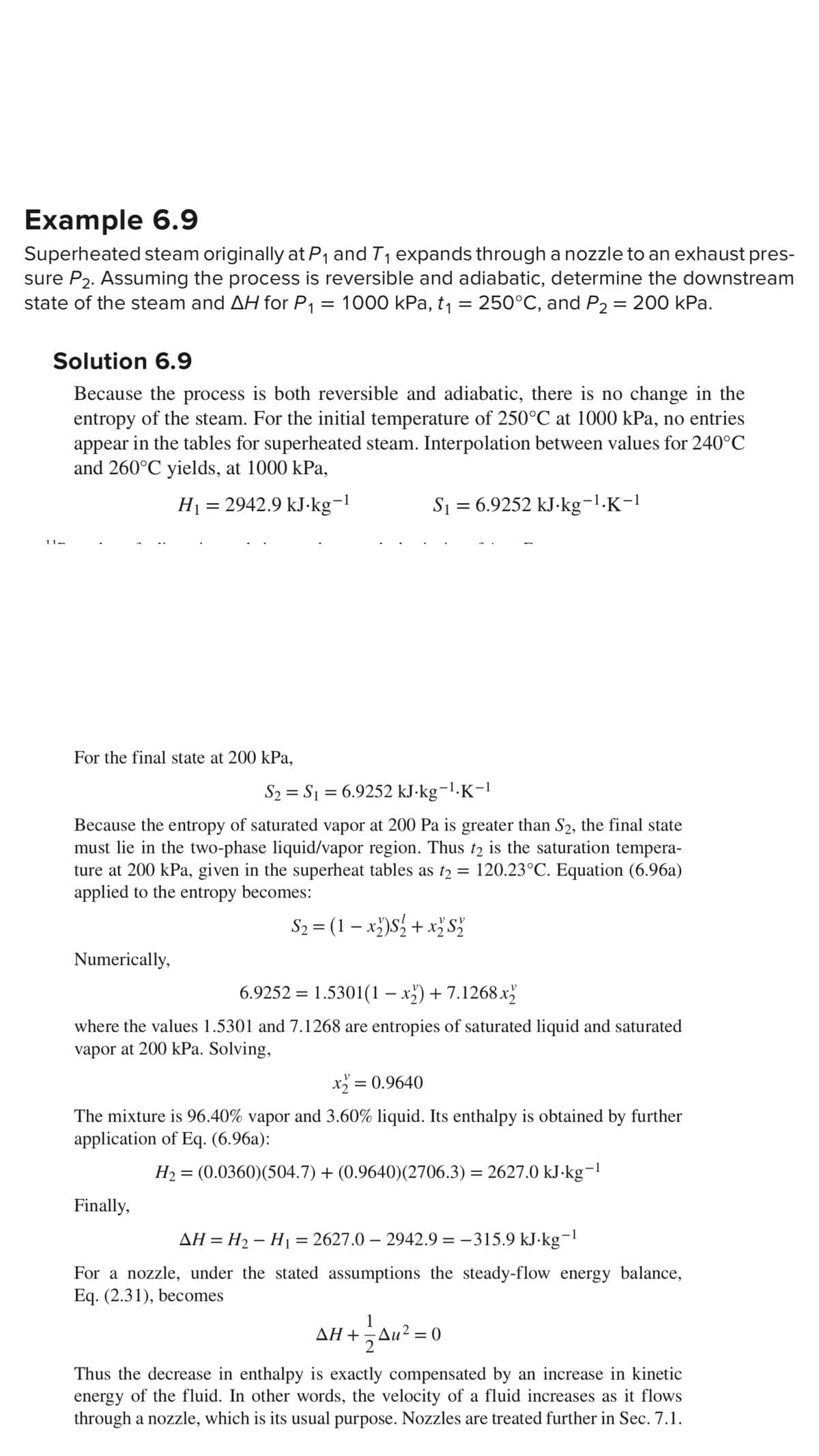[3] Redo Example 6.9 (textbook pages 245-246) part (a) only except with t₁-200 °C. Determine down- stream state and ΔΗ.
value from steam table for T1 = 200 C
H = 2826.8
S = 6.6922
![[3] Redo Example 6.9 (textbook pages 245-246) part (a) only except with t₁=200 °C. Determine down-
stream state and ΔΗ.](/v2/_next/image?url=https%3A%2F%2Fcontent.bartleby.com%2Fqna-images%2Fquestion%2Fac7c6172-231a-4368-b63c-a7fe235f5e8b%2Fbfa4ed66-edf0-4415-9a26-c45c43896394%2F7u8uqvd_processed.jpeg&w=3840&q=75)

given = P1 = 1000 KPa T1 = 200^c and P2 = 200 KPa
since the process is both reversible and adiabatic it means the change in entropy is zero
hence S1 = S2
at 1000 KPa and 200^c
given =
S1 = 6.6922 Kg/KJ
H1 = 2826.8 KJ/Kg*K
At P2= 200kPa,
S2=S1= 6.6922 kJ/Kg.K
hf = Specific enthalpy of saturated liquid at 200 KPa pressure = 504.7 KJ/Kg
hg = Specific enthalpy of saturated vapor at 200 KPa pressure = 2706.3 KJ/Kg
sf = Specific entropy of saturated liquid at 200 KPa MPa pressure = 1.5300 KJ/KgK
sg = Specific entropy of saturated vapor at 200 KPa pressure = 7.1268 KJ/Kg
since the entropy of saturated vapor at 200 KPa is greater than S2 hence the final state must lie in two phase liquid/vapor region
Step by step
Solved in 3 steps









